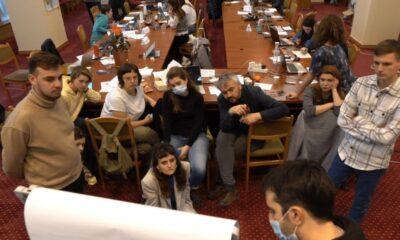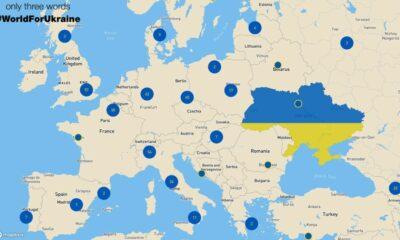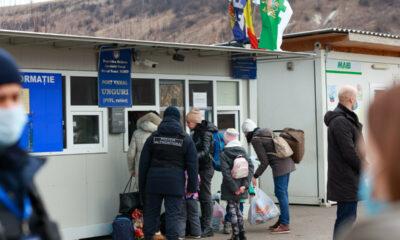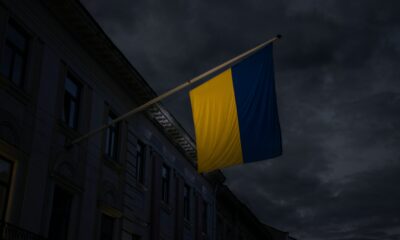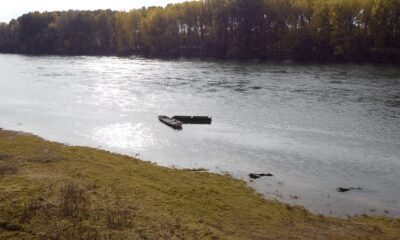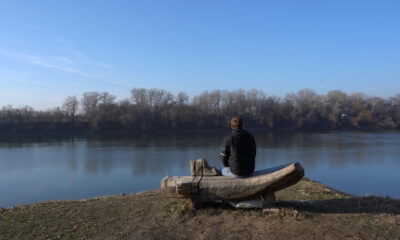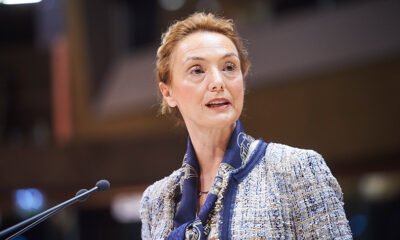Society
New Zealand mine: ‘No survivors’ after second blast
Reading Time: 4 minutesAll 29 men missing in a New Zealand coal mine since Friday are believed to be dead after a second explosion.
All 29 men missing in a New Zealand coal mine since Friday are believed to be dead after a second explosion.
Police Supt Gary Knowles said there was no hope that anyone could have survived the "massive" underground blast at the Pike River mine on South Island.
Prime Minister John Key said the deadliest mine accident in New Zealand for 96 years was a "national tragedy".
Rescuers never made contact with the 24 New Zealanders, two Australians, two Britons and a South African.
The Britons were Peter Rodger, 40, and Malcolm Campbell, 25, who were both originally from Scotland.
"Many British citizens have made their home in New Zealand and the loss of Mr Rodger, Mr Campbell and their colleagues will have touched the hearts of many in the UK," said UK Foreign Secretary William Hague.
‘Still hoping’
Supt Knowles, who led the rescue operation, said there had been another explosion at 1437 (0137 GMT) on Wednesday inside the mine.
"It is our belief that no-one has survived and everyone will have perished," he told reporters.
"I was at the mine myself when this actually occurred and the blast was horrific, just as severe as the first blast and we’re currently now moving into recovery phase.
"This is one of the most tragic things I have had to do as a police officer."
Rescuers had been preparing to go into the mine on Wednesday, but information suggested the levels of methane gas were too high.
Shortly afterwards, the second explosion happened. It was larger and stronger than Friday’s blast, and lasted about 30 seconds, officials said.
The chief executive of Pike River Coal, Peter Whittall, said it would make every effort to retrieve the bodies of the men, aged between 17 and 62.
"We want our boys back and we want to get them out," he told reporters.
Mr Whittall said the families were ”absolutely devastated by the news".
”They had all held out hope that their son, their brother would be the lucky one,” he said, before adding with tears welling up in his eyes: "I’m unlikely to see my workmates again."
Family members wept, shouted and fell to the floor after hearing the news, Grey District mayor Tony Kokshoorn said.
"People shouted out in anger, they are sickened by the whole thing. A lot of them felt misled," he added. "It’s unbelievable. This is the West Coast’s darkest hour. It doesn’t get worse than this."
Lawrie Drew, the father of 21-year-old miner Zen Drew, later told reporters: "I am still hoping that somebody can be found that is still alive."
The BBC’s Phil Mercer in Greymouth says a church service was held on Wednesday evening to remember the dead and to comfort those left behind.
‘Agonising blow’
The prime minister said he would travel to the area on Thursday to meet the miners’ families and thank the rescue crews.
"New Zealand is a small country, a country where we are our brother’s keeper, so to lose this many brothers at once strikes an agonising blow," Mr Key told a news conference in Wellington.
"The 29 men whose names and faces we have all come to know will never walk amongst us again. We are a nation in mourning."
He also offered his condolences to Australia, South Africa and the UK.
Mr Key praised all those involved in the rescue attempt, and said there would now be a full inquiry into how the tragedy had happened, with the aim of making sure it was not repeated.
Governor-General Sir Anand Satyanand said the disaster would be felt at many levels, and was a great personal loss for the individual families and friends of those who died.
It was not immediately clear what triggered the second blast. However, Mr Whittall said it was not thought that any rescue work caused it.
"To the best of my knowledge, absolutely nothing that was being done up there has caused this," he added. "This has come from somewhere up in the mine. We weren’t doing anything in the mine other than in the fresh air and that wouldn’t have caused any explosion."
Air samples taken from inside the mine through a 162m (530ft) bore-hole completed on Wednesday had shown dangerous levels of methane and carbon monoxide, preventing rescuers from entering the mine.
Two robots had been sent into tunnels of the mine and a third was on its way in the hope of gaining a clearer picture of the conditions.
Mr Drew said the miners’ families were angry that rescuers had not immediately entered the mine after the first blast, before there was a build-up of gas.
"They had their window of opportunity that Friday night, and now the truth can’t come out because no-one alive will be able to come out and tell the truth about what went on down there," he added.
But Mr Whittall defended the decision to keep rescue workers out of the mine. "It’s dangerous and it’s hazardous and the rescue teams would be putting their lives gravely at risk," he said.
"While we were there and making that assessment, exactly what we said could happen, happened."
Mining expert David Feickert told TVNZ it was likely the men became unconscious from carbon monoxide prior to the second explosion and so would not have felt the blast.
The head of the New Zealand Engineering, Printing and Manufacturing Union said rescuers would now begin a process called "gagging" the mine.
"They are going to flood it with carbon dioxide to kill any remaining burning and then there will be the exercise to recover the bodies from the mine," Andrew Little told Radio New Zealand.
He said equipment had to first be brought over from Australia, and that the operation might take one or two days.
Meanwhile, Energy Minister Gerry Brownlee said he did not believe the mine had been operating with excessive methane levels.
Pike River is not far from the Strongman Mine, where an underground explosion killed 19 men in January 1967.
New Zealand’s worst mining disaster was in 1896, when a gas explosion at the Brunner mine, also near Greymouth, left 65 miners dead. It accessed the same coal seam as the Pike River mine.
* New Zealand’s largest coal mine
* Employs some 150 people
* Operational since 2008
* Accesses Brunner and Paparoa coal seams via 2.3km tunnel under Paparoa Ranges
* 5.5m-wide, 4.5m-high tunnel bisects Hawera fault, through which methane gas is known to leak
* First blast is believed to have happened at 1530 (0230 GMT) on Friday
* Two injured miners emerged from the tunnel entrance on Friday evening
Society
“They are not needy, but they need help”. How Moldovan volunteers try to create a safe environment for the Ukrainian refugees
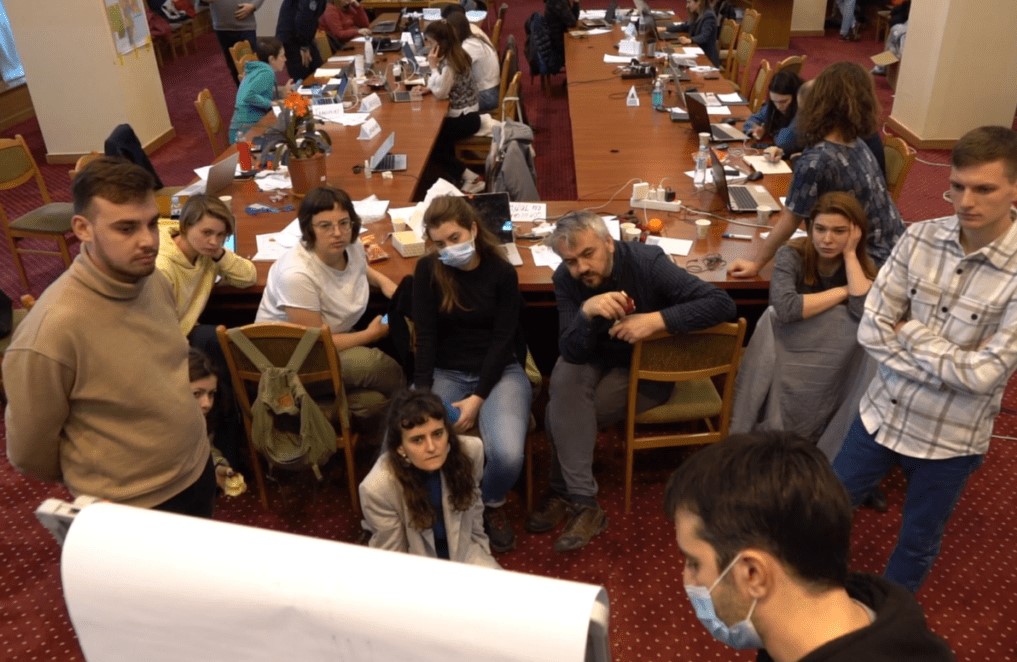
At the Government’s ground floor, the phones ring constantly, the laptop screens never reach standby. In one corner of the room there is a logistics planning meeting, someone has a call on Zoom with partners and donors, someone else finally managed to take a cookie and make some coffee. Everyone is exhausted and have sleepy red eyes, but the volunteers still have a lot of energy and dedication to help in creating a safe place for the Ukrainian refugees.
“It’s like a continuous bustle just so you won’t read the news. You get home sometimes and you don’t have time for news, and that somehow helps. It’s a kind of solidarity and mutual support,” says Vlada Ciobanu, volunteer responsible for communication and fundraising.
The volunteers group was formed from the very first day of war. A Facebook page was created, where all types of messages immediately started to flow: “I offer accommodation”, “I want to help”, “I want to get involved”, “Where can I bring the products?”, “I have a car and I can go to the customs”. Soon, the authorities also started asking for volunteers’ support. Now they all work together, coordinate activities and try to find solutions to the most difficult problems.
Is accommodation needed for 10, 200 or 800 people? Do you need transportation to the customs? Does anyone want to deliver 3 tons of apples and does not know where? Do you need medicine or mobile toilets? All these questions require prompt answers and actions. Blankets, sheets, diapers, hygiene products, food, clothes – people bring everything, and someone needs to quickly find ways of delivering them to those who need them.
Sometimes this collaboration is difficult, involves a lot of bureaucracy, and it can be difficult to get answers on time. “Republic of Moldova has never faced such a large influx of refugees and, probably because nobody thought this could happen, a mechanism of this kind of crisis has not been developed. Due to the absence of such a mechanism that the state should have created, we, the volunteers, intervened and tried to help in a practical way for the spontaneous and on the sport solutions of the problems,” mentions Ecaterina Luțișina, volunteer responsible for the refugees’ accommodation.
Ana Maria Popa, one of the founders of the group “Help Ukrainians in Moldova/SOS Українці Молдовa” says that the toughest thing is to find time and have a clear mind in managing different procedures, although things still happen somehow naturally. Everyone is ready to intervene and help, to take on more responsibilities and to act immediately when needed. The biggest challenges arise when it is necessary to accommodate large families, people with special needs, for which alternative solutions must be identified.
Goods and donations
The volunteers try to cope with the high flow of requests for both accommodation and products of all kinds. “It came to me as a shock and a panic when I found out that both mothers who are now in Ukraine, as well as those who found refuge in our country are losing their milk because of stress. We are trying to fill an enormous need for milk powder, for which the demand is high and the stocks are decreasing”, says Steliana, the volunteer responsible for the distribution of goods from the donation centers.
Several centers have been set up to collect donations in all regions of Chisinau, and volunteers are redirecting the goods to where the refugees are. A system for processing and monitoring donations has already been established, while the volunteer drivers take over the order only according to a unique code.
Volunteers from the collection centers also do the inventory – the donated goods and the distributed goods. The rest is transported to Vatra deposit, from where it is distributed to the placement centers where more than 50 refugees are housed.
When they want to donate goods, but they don’t know what would be needed, people are urged to put themselves in the position of refugees and ask themselves what would they need most if they wake up overnight and have to hurriedly pack their bags and run away. Steliana wants to emphasise that “these people are not needy, but these people need help. They did not choose to end up in this situation.”
Furthermore, the volunteer Cristina Sîrbu seeks to identify producers and negotiate prices for products needed by refugees, thus mediating the procurement process for NGOs with which she collaborates, such as Caritas, World Children’s Fund, Polish Solidarity Fund, Lifting hands, Peace Corps and others.
One of the challenges she is facing now is the identifying a mattress manufacturer in the West, because the Moldovan mattress manufacturer that has been helping so far no longer has polyurethane, a raw material usually imported from Russia and Ukraine.
Cristina also needs to find solutions for the needs of the volunteer groups – phones, laptops, gsm connection and internet for a good carrying out of activities.
Hate messages
The most difficult thing for the communication team is to manage the hate messages on the social networks, which started to appear more often. “Even if there is some sort of dissatisfaction from the Ukrainian refugees and those who offer help, we live now in a very diverse society, there are different kind of people, and we act very differently under stress,” said Vlada Ciobanu.
Translation by Cătălina Bîrsanu
Important
#WorldForUkraine – a map that shows the magnitude of the world’s actions against Russian aggression

The international community and volunteers from all over te world have launched #WorldForUkraine as a platform that shows the magnitude of the world’s actions against the Russian aggression. In a digital world – it is an interactive map of public support of Ukrainians under the hashtag #WorldForUkraine – rallies, flash mobs, protests around the world. In the physical dimension – it is your opportunity to take to the streets and declare: “No to Putin’s aggression, no to war.”
„Today, along with the political and military support, emotional connection with the civilized world and truthful information are extremely important for Ukraine. The power to do it is in your hands. Join the #WorldForUkraine project and contribute to the victorious battle against the bloodshed inflicted on Ukraine by the aggression of the Russian Federation”, says the „about the project” section of the platform.
Go to the streets — Tell people — Connect and Unite — Become POWERFUL
Volunteers have launched #WorldForUkraine as a platform that shows the magnitude of the world’s actions against Russian aggression. In digital world – it is an INTERACTIVE MAP of public support of Ukrainians worldforukraine.net under the hashtag #WorldForUkraine – rallies, flash mobs, protests around the world. In the physical dimension – it is your opportunity to take to the streets and declare: “No to Putin’s aggression, no to war.” There you may find information about past and future rallies in your city in support of Ukraine. This is a permanent platform for Ukrainian diaspora and people all over the world concerned about the situation in Ukraine.
So here’s a couple of things you could do yourself to help:
* if there is a political rally in your city, then participate in it and write about it on social media with geolocation and the hashtag #WorldForUkraine
* if there are no rallies nearby, organize one in support of Ukraine yourself, write about it on social media with geolocation adding the hashtag #WorldForUkraine
The map will add information about gathering by #WorldForUkraine AUTOMATICALLY
Your voice now stronger THAN ever
All rallies are already here: https://worldforukraine.net
Important
How is Moldova managing the big influx of Ukrainian refugees? The authorities’ plan, explained
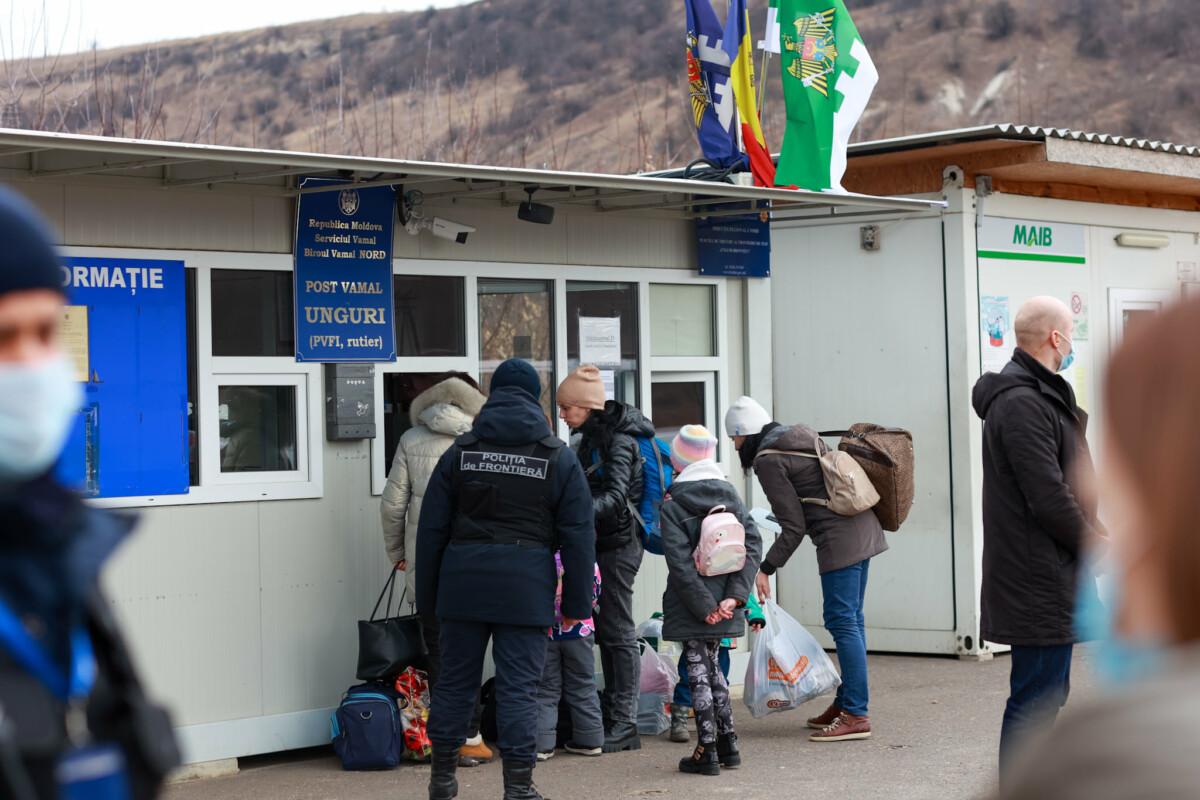
From 24th to 28th of February, 71 359 Ukrainian citizens entered the territory of Republic of Moldova. 33 173 of them left the country. As of this moment, there are 38 186 Ukrainian citizens in Moldova, who have arrived over the past 100 hours.
The Moldovan people and authorities have organized themselves quickly from the first day of war between Russia and Ukraine. However, in the event of a prolonged armed conflict and a continuous influx of Ukrainian refugees, the efforts and donations need to be efficiently managed. Thus, we inquired about Moldova’s long-term plan and the state’s capacity to receive, host, and treat a bigger number of refugees.
On February 26th, the Ministry of Labor and Social Protection of Moldova approved the Regulation of organization and functioning of the temporary Placement Center for refugees and the staffing and expenditure rules. According to the Regulation, the Centers will have the capacity of temporary hosting and feeding at least 20 persons, for a maximum of 3 months, with the possibility of extending this period. The Centers will also offer legal, social, psychological, and primary medical consultations to the refugees. The Center’s activity will be financed from budget allocations, under Article 19 of Provision no. 1 of the Exceptional Situations Commission from February 24th, 2022, and from other sources of funding that do not contravene applicable law.
The Ministry of Inner Affairs and the Government of Moldova facilitated the organization of the volunteers’ group “Moldova for Peace”. Its purpose is to receive, offer assistance and accommodation to the Ukrainian refugees. The group is still working on creating a structure, registering and contacting volunteers, etc. It does not activate under a legal umbrella.
Lilia Nenescu, one of the “Moldova for Peace” volunteers, said that the group consists of over 20 people. Other 1700 registered to volunteer by filling in this form, which is still available. The group consists of several departments:
The volunteers’ department. Its members act as fixers: they’re responsible for connecting the people in need of assistance with the appropriate department. Some of the volunteers are located in the customs points. “The Ministry of Inner Affairs sends us every day the list of the customs points where our assistance is needed, and we mobilize the volunteers”, says Lilia Nenescu.
The Goods Department manages all the goods donated by the Moldavian citizens. The donations are separated into categories: non-perishable foods and non-food supplies. The volunteers of this department sort the goods into packages to be distributed.
The Government intends to collect all the donations in four locations. The National Agency for Food Safety and the National Agency for Public Health will ensure mechanisms to confirm that all the deposited goods comply with safety and quality regulations.
The Service Department operates in 4 directions and needs the volunteer involvement of specialists in psychology, legal assistance (the majority of the refugees only have Ukrainian ID and birth certificates of their children); medical assistance; translation (a part of the refugees are not Ukrainian citizens).
According to Elena Mudrîi, the spokesperson of the Ministry of Health, so far there is no data about the number of Covid-19 positive refugees. She only mentioned two cases that needed outpatient medical assistance: a pregnant woman and the mother of a 4-day-old child.
The Accommodation Department. The volunteers are waiting for the centralized and updated information from the Ministry of Labor about the institutions offering accommodation, besides the houses offered by individuals.
The Transport Department consists of drivers organized in groups. They receive notifications about the number of people who need transportation from the customs points to the asylum centers for refugees.
The municipal authorities of Chișinău announced that the Ukrainian children refugees from the capital city will be enrolled in educational institutions. The authorities also intend to create Day-Care Centers for children, where they will be engaged in educational activities and will receive psychological assistance. Besides, the refugees from the municipal temporary accommodation centers receive individual and group counseling.
In addition to this effort, a group of volunteers consisting of Ana Gurău, Ana Popapa, and Andrei Lutenco developed, with the help of Cristian Coșneanu, the UArefugees platform, synchronized with the responses from this form. On the first day, 943 people offered their help using the form, and 110 people asked for help. According to Anna Gurău, the volunteers communicate with the Government in order to update the platform with the missing data.
Translation from Romanian by Natalia Graur


